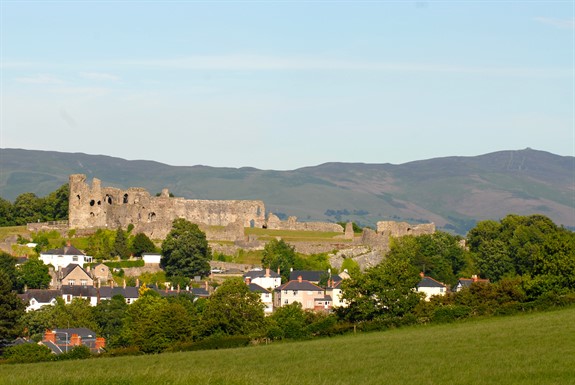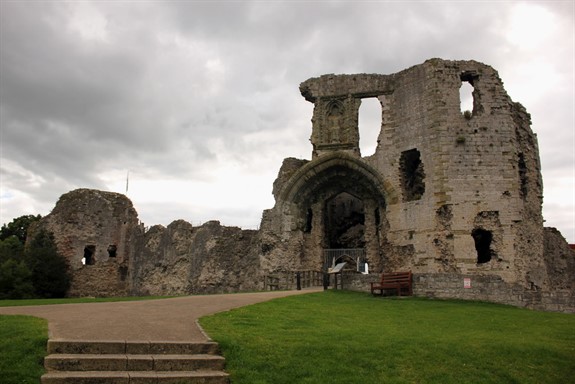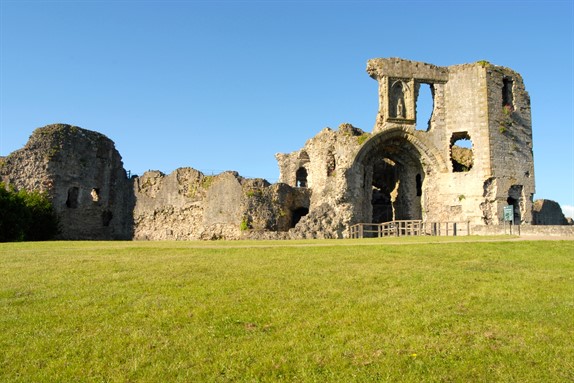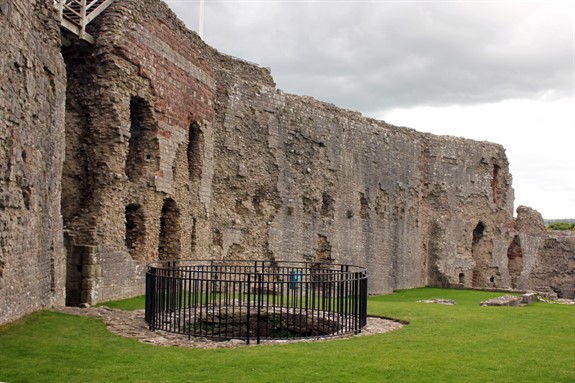Posted on 11/09/2019 by David
If you think of Edward I's castles in North Wales as a 'Ring of Steel' encircling the coast, that makes Denbigh Castle a bit of a 'Piggy in the Middle'. Yet there is nothing inferior about this imposing fortress atop a hill guarding the northern pasturelands of the Vale of Clwyd.
Unlike the coastal Word Heritage Status headliners of Conwy, Caernarfon, Beaumaris and Harlech, Denbigh's inland location is part of its attraction. From its formidable ramparts you get a true sense of how it protected its garrisons from land attacks on all sides, and how from here it kept the locals in check.
Denbigh Castle may be in a more ruinous state than its more illustrious counterparts, but add in well-preserved town walls only visitable by requesting a key, and fewer visitors overall, and its appeal as a place to explore becomes obvious.
So let's take a look!

Welsh Princes got there first
There was a fortification in Denbigh long before Edward I and his master builder arrived in town. Denbigh - Dinbych in Welsh, which means "little fort" - was the stronghold of Dafydd ap Gruffydd, which he may have inherited from Llywelyn the Great. There may have been even earlier settlements here, though there are no physical remains to prove this.
What we do know is that in 1282, Edward I drove the Welsh out of Denbigh's fortress and gave the position to Henry de Lacy, Earl of Lincoln and one of the king's more successful military leaders. Henry made use of Edward's castle designer, Master James of St George, and had the imposing castle and town walls of Denbigh constructed, the remains of which visitors explore today.

Construction outlives its custodian
Henry de Lacy's builders got to work fast, shoring up the rather flimsy (by Edward I's standards) south and western defences, the curtain wall and possibly the main gatehouse. Construction also started on the town walls.
The Welsh were not just going to lie down for their new overlords, however. In 1295, following a shortlived rebellion led by Madog ap Llywelyn, de Lacy ordered the rebuilding of the main gatehouse with three octagonal towers and the construction of a great hall, extensive residential complex, and massive towers. Henry de Lacy died in 1311 and did not see Denbigh Castle completed.

Denbigh's battles are not yet over...
Denbigh Castle's story does not end with de Lacy's death, however. In 1400 Henry Percy held out for more than two years against attacks from Owain Glyndŵr.
Following the outbreak of the Civil War, in 1646 Colonel William Salesbury repaired the decaying castle before defending the position for the Royalists, holding out for six months against a much larger force.
Eventually, and only after being instructed by his own king, Charles I, to surrender to the attacking General Mytton, Salesbury and his men marched out with flags flying, drums beating and trumpets sounding. The castle had not been breached.
 Denbigh Castle - what you'll see today
Denbigh Castle - what you'll see today
The gatehouse remains the most impressive section of Denbigh Castle, in part because the original structure was so formidable and also thanks to recent restorative efforts. Look for a carved figure towering over you as you approach, who may or may not be Edward I himself.
The remains of various buildings surround the lush green grass of the Inner Ward, including huge, partly walkable curtain walls, the hexagonal Kitchen Tower (look for the massive fireplaces), the remains of the Great Hall and the so-called White Chamber Tower. The Green Chambers were the castle's residential quarters, and they include the remains or original carvings.
Things get confusing where the town walls joins the castle, around the Postern tower and gate (where water supplies were brought in). A modern wooden bridge crosses deep pits and the Postern gate, the lowest access point to the castle. This steep access slope cuts sharply to the left and was designed to confuse and confine enemy attackers, making them easy targets for the castle's defenders.
Much of the town's wall still stands, together with the remains of a number of towers including the impressive Goblin Tower, and two gatehouses. Of these, the Burgess Gate to the north is the best preserved. Entrance to the walls is via a gate, kept locked, off Bull Lane near the Burgess Gate.
There is a charge to enter the castle but a visit to the town walls is free. You will need to request a key for the walls, for which you need to pay a refundable cash deposit.
To request a key, call Denbigh Castle on 01745 813385, the Library on 01745 816313, or the Glass Onion Café on 01745 813125.
Find out more information on the CADW website.
Images courtesy: Denbigh Castle close-ups © Copyright Jeff Buck and licensed for reuse under this Creative Commons Licence. Denbigh Castle panorama and ruins by Errol Edwards, 2010, via Wikipedia.

